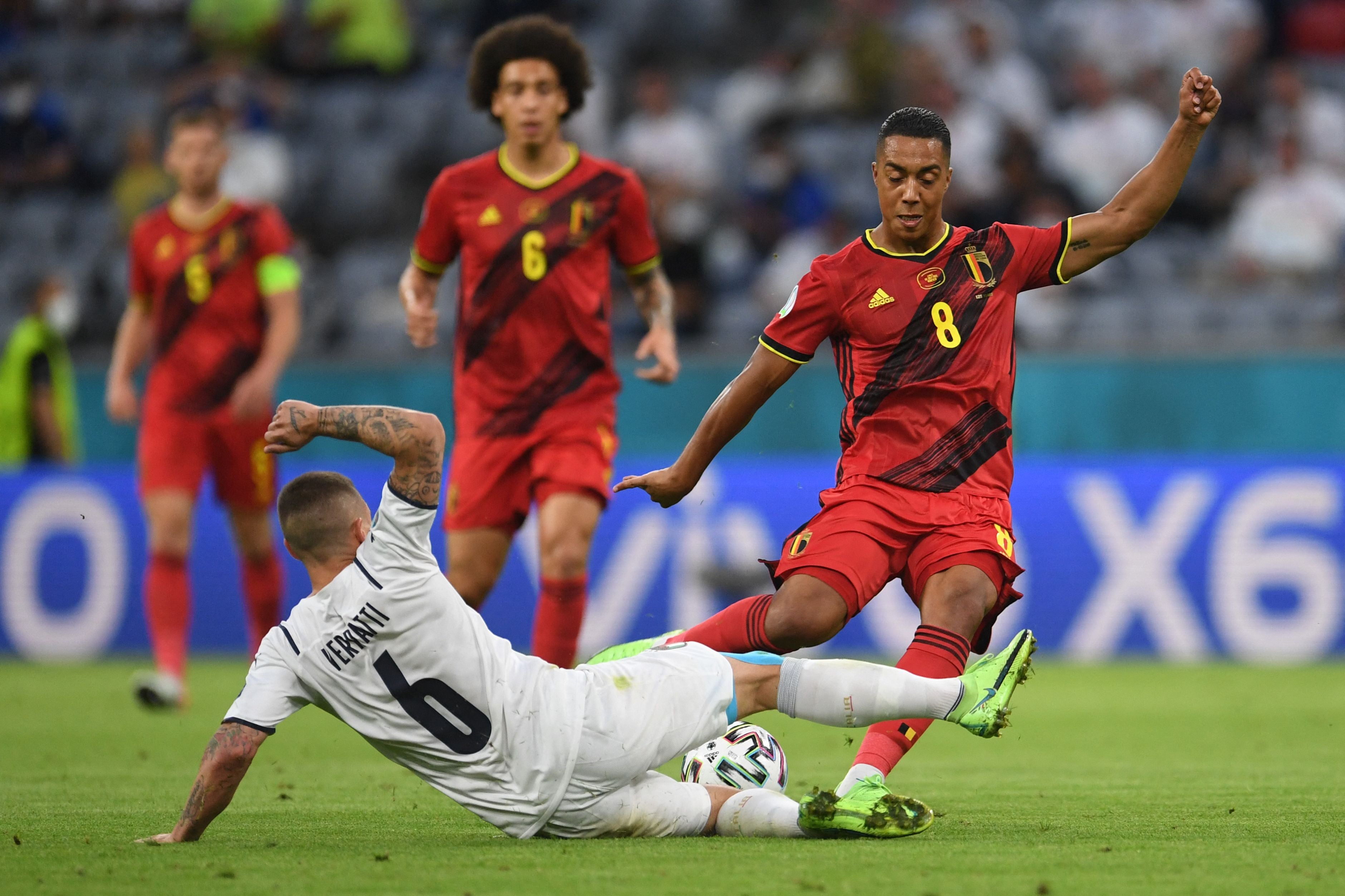Italy’s high-press in the face of Belgium’s deadly transitions leads to Euro 2020 classic
Duel of tactical approaches sets up spectacular clash as Italy advanced to the quarter-finals
Your support helps us to tell the story
From reproductive rights to climate change to Big Tech, The Independent is on the ground when the story is developing. Whether it's investigating the financials of Elon Musk's pro-Trump PAC or producing our latest documentary, 'The A Word', which shines a light on the American women fighting for reproductive rights, we know how important it is to parse out the facts from the messaging.
At such a critical moment in US history, we need reporters on the ground. Your donation allows us to keep sending journalists to speak to both sides of the story.
The Independent is trusted by Americans across the entire political spectrum. And unlike many other quality news outlets, we choose not to lock Americans out of our reporting and analysis with paywalls. We believe quality journalism should be available to everyone, paid for by those who can afford it.
Your support makes all the difference.If the elite, high-level drama of the Champions League in recent seasons has been sparked by the emergence of organised pressing and the importance of quick transitions in the club game, both of those aspects of play were central characters throughout this thrilling Euro 2020 quarter-final between Belgium and Italy.
In April, the Allianz Arena staged Bayern Munich’s breathless Champions League quarter-final tie against Paris Saint-Germain, which was an end-to-end contest of counter-attacks and bold forward play. In the same stadium three months later, Belgium and Italy more than matched the intensity and levels of tactical organisation we’ve become accustomed to at the highest level of club football, while providing the unmatched drama of a knockout match at a major tournament.
Central to the contest was the battle between Italy’s high press and Belgium’s desire to exploit their approach through quick transitions. It led to a high-stakes encounter which was often played on a knife edge.
Italy have thrilled throughout these Euros by blending emotion and spirit with tactical discipline, but Roberto Mancini turned that up to another level as he set his side up to get into Belgium’s faces from the start. Marco Verratti and Nicola Barella pressed high up onto Youri Tielemans and Axel Witsel, while Jorginho stepped up onto Kevin De Bruyne. There were times where Italy’s three central midfielders all pushed into Belgium’s defensive third while attempting to win the ball back.

Given Belgium’s threat on the counter, it was an incredibly brave approach. It also looked like it was exactly what Belgium wanted, as there is no other side at this tournament that adjusts its plan to maximise its danger on the break to the extent of Roberto Martinez’s team. There are subtle tweaks to Belgium’s shape depending on the phase of play and here against Italy, like it was against Portugal , Romelu Lukaku and De Bruyne switched positions depending on whether their side were in possession.
The Inter Milan forward stayed central when his side established possession, which allowed him to be more central to Belgium’s attacks, holding the ball up and bringing others into play. It also meant he was in between the goal posts when they were building attacks from the back, which is exactly where you’d want a striker who scored 24 goals in Serie A last season.
When Belgium didn’t have the ball, however, Lukaku drifted out to the right while De Bruyne occupied the central space. This allowed him to take up a promising position when Belgium regained possession before they looked to quickly launch an attack down that side.
While Italy's approach was largely successful, as they continually regained possession throughout the first half, there were several moments which highlighted how inherently risky it was. With Mancini’s midfield pressing so high, all it took for Belgium to counter was one moment to exploit it. On one occasion, De Bruyne was able to spin Verratti on the edge of the box and suddenly had the whole half to run into. He fed Lukaku, who was in space having already pulled wide to the right, and the striker was able to run towards the goal before aiming at the bottom corner. Gianluigi Donnarumma made the save but the danger was clear.
There was another example where Youri Tielemans turned the high-pressing Verratti in the same position, only for the PSG midfielder to haul him down for a yellow card. It was a decision he had to make - as had the Italian not committed the foul, Tielemans similarly had the whole half to drive into.
The high-risk nature of the approach was clear but it was also high-reward, and it led to Italy scoring the opening goal in the 31st minute. Belgium attempted to pass their way out from the back to beat the Italy press and spark the transition, but Verratti was too quick in intercepting Jan Vertonghen’s forward ball towards De Bruyne. He then quickly moved the ball into the box for Barella, who smashed it past Thibaut Courtois.
Lorenzo Insigne’s stunning goal was followed by Lukaku’s penalty to set up the second half beautifully. There was little caution from the Italians as Verratti and Barella continued to hunt the ball in advanced positions, even after Belgium went close to scoring the equaliser as Leonardo Spinazzola blocked Lukaku’s shot on the goal line.
The first goal was, and proved vital, however, and if it had gone the other way it would have swung the direction of this tie completely. But the fact that Italy scored it through a purposeful tactical approach, all while risking the threat of playing into Belgium’s strengths, means they deserve to be advancing into the semi-finals.
Join our commenting forum
Join thought-provoking conversations, follow other Independent readers and see their replies
0Comments